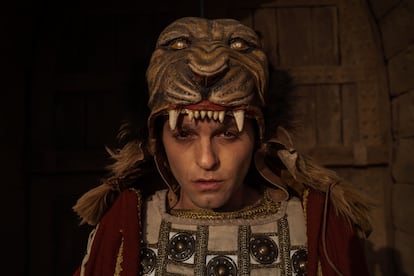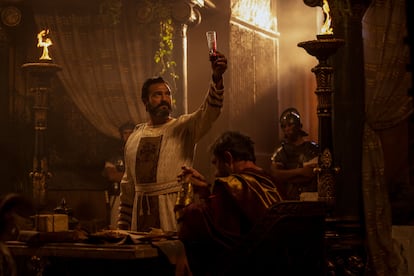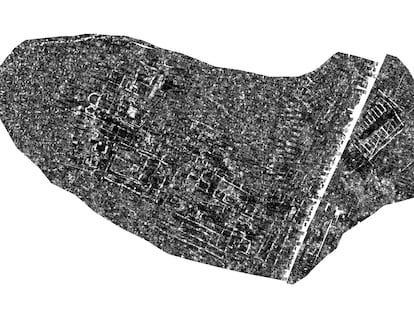Nero never fed Christians to the lions in the Colosseum
A new eight-episode series about the great Roman amphitheater is airing for the first time on The History Channel on October 10


Popular myths surrounding the Roman Empire have provided multiple story templates for Hollywood, but all too often they depart significantly from the truth. The 1951 movie Quo Vadis, for example, depicts a depraved Emperor Nero playing the lyre while Rome burns, as well as feeding Christians to the lions in the Colosseum. In fact, there is no evidence to support his lyre-playing and he could not possibly have used the Colosseum to this end. Why? Because the Roman Empire’s 45-meter-high amphitheater did not yet exist; Nero committed suicide in 68 AD and the Colosseum was inaugurated in 80 AD.
The documentary series Colosseum, which will air on The History Channel from October 10, reconstructs how this extraordinary piece of architecture was built and who attended the feeding frenzies that took place within it, once Nero was good and buried.
Construction work on the Colosseum began under Emperor Titus Flavius Vespasian (9 AD-79 AD), a military man who founded the Flavian dynasty. He was not, by Roman standards, a bad ruler, implementing an ambitious program of financial reforms and ordering the construction of the Colosseum, which began its existence as the Flavian Amphitheater, although the Romans soon changed its name. He was succeeded by his son Titus Vespasian Augustus (31 AD-81 AD) who, in a bid to shore up popular support, inaugurated the Colosseum as swiftly as possible and declared 100 days of games.
The Roman public were enthusiastic spectators, flocking in hordes to the amphitheater, which became the stage for all manner of atrocities: prisoners burned alive in the arena, African slaves pitted against wild animals - the most famous of whom was Carpophorus, who killed 20 of his adversaries in a single afternoon - gladiators fighting to the death and Christians devoured by lions. There was even a bishop on the menu.
Almost 60,000 members of the public were able to enjoy the gore at any one time. The best seats were reserved for the emperor and his inner circle and the lower seats, closest to the arena, were for the upper classes and the military. Normal citizens occupied the middle tiers while slaves and women were relegated to the top seating are. Not only was there an endless display of violence on offer; over the course of the 100 days the audience also feasted on the meat of the sacrificed animals, which included rhinoceroses, giraffes, lions, cheetahs and wild boars: 11,000 animals were slaughtered in a single day during the festivities, during which a total of around one million animals were put to the sword, leading to the extinction of some species in North Africa.

Are you not entertained?
The popularity of these spectacles waxed and waned over time as new sensibilities entered Roman society and some preferred not to watch Christians being eaten for breakfast. As such, the Colosseum had to look for new attractions that would keep the audiences in their seats. And what better than a fight to the death between female gladiators? This too proved controversial though as it was argued that the violence involved was strictly the domain of men. However, Trajan (53-117 AD), the emperor who ruled over the Roman Empire at its most extensive scale, was not of this opinion and so the show went on.
Among the most famous female gladiators was a free Roman woman named Media, who won multiple victories. The satirical poet Juvenal, who considered her a perfect example of Rome’s decadence, wrote: “Women fighting, whatever next?” When Juvenal went to the Colosseum to see for himself, Media decided to take a gamble; she would fight the finest gladiator of the day, a Dacian taken prisoner by Rome. The combat was so spectacular that the poet changed his mind and admitted that women could fight as well, or even better, than men. But two centuries later, Septimius Severus again turned the tide and banned fights between women definitively.
The death of Titus brought his ambitious brother Titus Flavius Domitian to power: a man who, according to his critics, was something of a tyrant. The new emperor thought that if the construction of the Colosseum had served his deceased brother politically, it could do the same for him. He ordered Hatelius, one of the great architects of the era, to create “an arched subway” under the arena, three kilometers long, from which both animals and humans would be disgorged. Until then, victims and combatants had emerged through one of the 80 entrances at ground level. But when the subway was finished, a trap door would open in the middle of the arena and unfortunate protagonists would appear as if by magic.
There was a problem, however: how to stop rainwater from seeping under the Colosseum and how to hoist an elephant from the subway’s depth of six meters to the level of the arena floor. Hatelius, who had only two months to carry out the emperor’s order, found solutions: a sewage system that is still partially used in Rome today and an ingenious network of pulleys that could shift heavy loads with the strength of just a few men. These feats not only spared him from execution, but also made him a millionaire.
The Colosseum is so named because it stood next to a 30-meter bronze statue called Colossus Nero. At some unknown point in history, the Romans removed the statue, perhaps because they found it hard to forgive the emperor for burning the Eternal City, though this image of him as a pyromaniac may also have been little more than a Hollywood myth.
Tu suscripción se está usando en otro dispositivo
¿Quieres añadir otro usuario a tu suscripción?
Si continúas leyendo en este dispositivo, no se podrá leer en el otro.
FlechaTu suscripción se está usando en otro dispositivo y solo puedes acceder a EL PAÍS desde un dispositivo a la vez.
Si quieres compartir tu cuenta, cambia tu suscripción a la modalidad Premium, así podrás añadir otro usuario. Cada uno accederá con su propia cuenta de email, lo que os permitirá personalizar vuestra experiencia en EL PAÍS.
¿Tienes una suscripción de empresa? Accede aquí para contratar más cuentas.
En el caso de no saber quién está usando tu cuenta, te recomendamos cambiar tu contraseña aquí.
Si decides continuar compartiendo tu cuenta, este mensaje se mostrará en tu dispositivo y en el de la otra persona que está usando tu cuenta de forma indefinida, afectando a tu experiencia de lectura. Puedes consultar aquí los términos y condiciones de la suscripción digital.
More information
Últimas noticias
There is as much life left to discover on planet Earth as that which is already known
Dozens presumed dead, around 100 injured in fire at Swiss Alps bar during New Year’s celebration
Is porn for women different from conventional porn? We spoke to those who make it
Cartagena de Indias is sinking: What can the city do to mitigate it?
Most viewed
- Sinaloa Cartel war is taking its toll on Los Chapitos
- Reinhard Genzel, Nobel laureate in physics: ‘One-minute videos will never give you the truth’
- David King, chemist: ‘There are scientists studying how to cool the planet; nobody should stop these experiments from happening’
- Oona Chaplin: ‘I told James Cameron that I was living in a treehouse and starting a permaculture project with a friend’
- The Interoceanic Train, the Mexican alternative to the Panama Canal










































